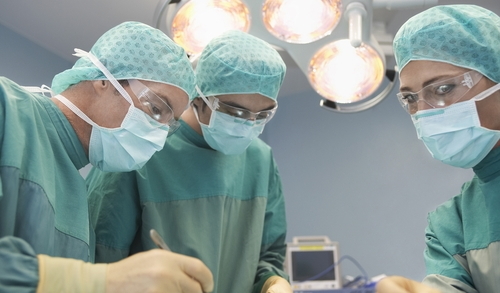Benign prostatic hyperplasia (BPH) treatment varies depending on the seriousness of the enlarged prostate symptoms, how much those symptoms impact daily life, and the presence of other medical conditions.
Having an enlarged prostate can cause changes in urinary function—from urinating too frequently to not urinating at all. Most of these issues are very treatable, and a variety of remedies exist.
Enlarged Prostate Treatment
Self-Care
For mild symptoms, discomfort can be alleviated within just a couple of months by:
- Urinating the moment an urge hits and using the restroom frequently, even when the urge isn’t there
- Avoiding alcohol and caffeine
- Minimizing the volume of fluids consumed at one time and avoiding drinks two hours before bedtime
- Avoiding cold and sinus medications that contain antihistamines or decongestants, which prevent muscles in the prostate and bladder neck from relaxing
- Keeping warm and engaging in regular exercise, as cold weather and inactivity may worsen symptoms
- Performing Kegel exercises, which strengthen the pelvic floor muscles
- Decreasing stress, nervousness, and tension, all of which can result in more frequent urination
Drug Therapy
BPH medication can ease enlarged prostate symptoms, but vary in how quickly they take to work. Current options include:
- Alpha blockers, such as tamsulosin (Flomax), relax bladder neck muscles and muscle fibers in the prostate, resulting in increased urinary flow and decreased need to urinate. Although they effect relief within a day or two, they can also trigger retrograde ejaculation (when semen is directed to the bladder instead of the penis).
- 5-alpha reductase inhibitors such as finasteride (Propecia) and dutasteride (Avodart) lower the body’s levels of a hormone called dihydrotestosterone, which reduces the size of the prostate gland, improves urine flow rate, and lessens overall symptoms of BPH.
- Combination drug therapy: Taking an alpha blocker and a 5-alpha reductase inhibitor concurrently is often more effective than taking either alone. According to a trial study backed by the National Institute of Diabetes and Digestive and Kidney Diseases (NIDDK), the combination not only improves urinary flow and reduces the size fo the prostate, but it lowers the risk of future BPH complications.
Minimally Invasive Therapy
Less invasive techniques exist, and are often used when symptoms are more severe and no longer respond favorably to medication. They include:
- Transurethral Microwave Thermotherapy: Used for mild to moderate blockage, a device transmits computer-regulated microwaves through a catheter, causing the surplus prostate tissue to be warmed and destroyed. This procedure takes roughly an hour and is done without general anesthesia. Side effects include erectile dysfunction and incontinence. While this method does not cure BPH or correct the issue of incomplete emptying of the bladder, it does decrease urinary urgency, frequency, struggling and irregular flow.
- Transurethral Needle Ablation (TUNA): Prostate tissue is heated and destroyed with high-frequency radiowaves that are passed through needles inserted directly into the prostate. The procedure enhances urine flow and allays symptoms. Incontinence and impotence have not been observed with this technique.
- Homium Laser Enulcleation of Prostate (HoLEP): a resectoscope is inserted through the urethra and guided to the prostate. After a lens and laser fiber is passed through the scope’s hollow center, the prostate tissue is vaporized.
Surgery
Surgery is usually warranted when other treatment options fail. Procedures include:
- Transurethral resection of the prostate (TURP): This is the most frequently used surgical procedure, making up roughly 90 percent of all prostate surgeries for BPH. During TURP, an instrument called a resectoscope is inserted into the urethra and guided to the prostate. The scope contains valves that control irrigating fluid and an electrical loop that slices tissue and seals bleeding vessels. The sloughed off prostate tissue is then transported to the bladder by irrigating fluid and is later flushed out in the urine. This technique is usually set aside for extremely symptomatic men who have already tried medical therapy, but have failed to see improvement.
- Transurethral incision of the prostate (TUIP): An instrument that produces an electric current or laser beam is inserted into the urethra and guided to the prostate (where it meets the bladder). No tissue is removed; rather, muscles in the area are cut so that the opening to the bladder is more relaxed and urine is able to flow more freely. This procedure is often performed in men with a smaller prostate.
- Simple prostatectomy: An open prostatectomy is often performed when a transurethral procedure is unable to be done because either the prostate is too large, or the bladder has been impaired or contains stones. Using general or spinal anesthesia, a cut is made through the abdomen or the area behind the scrotum, and only the inner portion of the prostate gland is extracted, while the outer segment is left intact.
- Laser surgery: This surgical technique uses a high-energy laser to vaporize and destroy prostate tissue.
BPH Prognosis
Although self-care measures ease BPH symptoms, they do not reduce the size of the prostate or prevent it from swelling further, meaning other treatments are often required. Medication can improves urinary flow and reduce the prostate size, but it may not be a long-term solution. According to a 17-year study by the Mayo Clinic, which evaluated treatment of over 2,000 men, BPH surgery may provide the most effective relief for severe symptoms.


